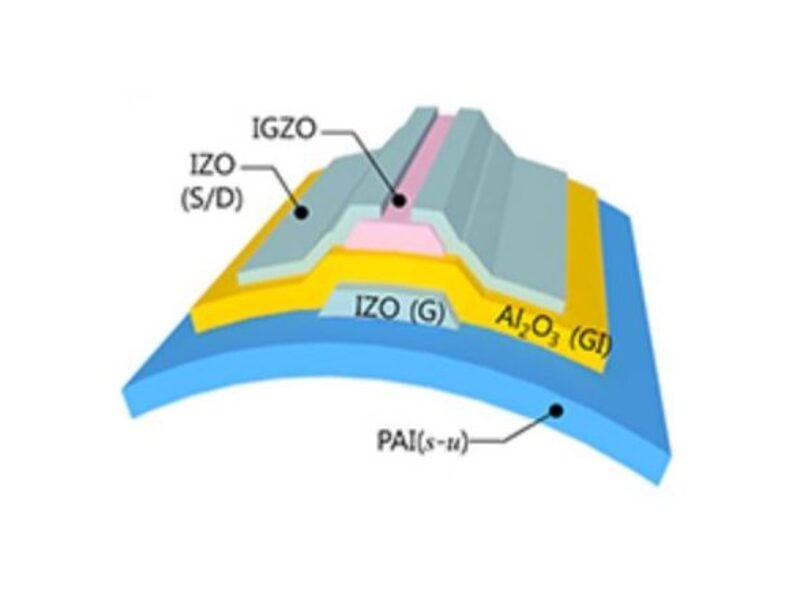
Poly(amide-imide) film could replace glass in flexible displays, says KAIST
So far, organic polymers have had a relatively large CTE compared to that of ceramics or metals. This difference in CTE means cracks can appear in planar substrate assemblies due to stress caused by uneven thermal expansion and contraction. Therefore, matching the CTE of the semiconductor device and the substrate is crucial for successful manufacturing of display devices.
Researchers at KAIST were able to make a new polymeric material with an exceptionally low CTE value while retaining high transparency and excellent thermal and mechanical properties. The method developed for amorphous polymers with a controlled CTE can be applied to control the thermal expansion of organic materials as well.

flexible IGZO TFT fabricated on PAI (s-u).
As the researchers found, thermal expansion and contraction of polymer films can be minimized by introducing interaction forces between the polymer chains and by arranging the direction of the force perpendicularly. The team successfully implemented this approach by appropriately designing the chemical structure of a transparent film of polymeric material called poly (amide-imide). The transparent, flexible, and high-performing polymeric material is thermally stable enough to be used in the AMOLED (active-matrix organic light-emitting diode) fabrication process (stable at >400℃) with a low CTE (4ppm/℃).
The researchers made IGZO TFT (Indium Gallium Zinc Oxide Thin Film Transistor) devices on the newly synthesized transparent poly(amide-imide) film, and confirmed that the device could indeed operate normally even when folded down to a radius of 1mm.
KAIST – www.kaist.edu
 If you enjoyed this article, you will like the following ones: don't miss them by subscribing to :
eeNews on Google News
If you enjoyed this article, you will like the following ones: don't miss them by subscribing to :
eeNews on Google News




